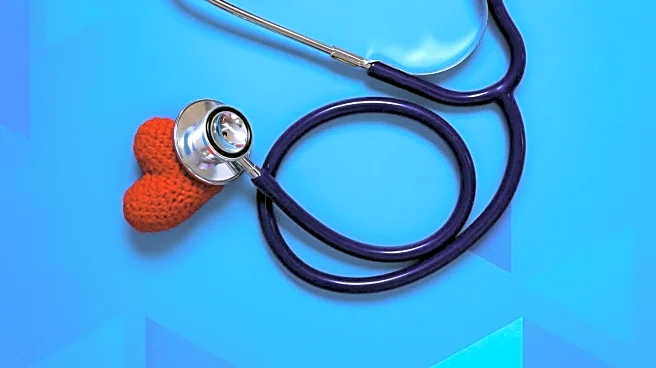What's Happening?
Researchers at the University of Exeter Medical School have developed a new method to improve the accuracy of blood pressure readings taken at the ankle. This approach is particularly beneficial for individuals
who cannot have their blood pressure measured on the arm due to disabilities, missing limbs, or movement difficulties following a stroke. The study, published in BMJ Open, involved data analysis from over 33,000 individuals worldwide and was funded by the National Institute for Health and Care Research (NIHR). The team has also launched an online calculator to assist healthcare professionals and patients in interpreting ankle readings more precisely. High blood pressure is a major contributor to heart disease, stroke, and kidney problems, affecting over a billion people globally. Accurate measurement is crucial, and this new method aims to reduce misdiagnoses by providing more precise readings for those who cannot use traditional arm measurements.
Why It's Important?
The development of this new blood pressure measurement method addresses a significant health inequality by providing accurate readings for individuals who previously could not have their blood pressure measured accurately from their arm. This is particularly important for stroke survivors, many of whom experience upper limb dysfunction, making arm measurements difficult. The NHS Health Check Programme diagnoses thousands of new high blood pressure cases annually, and this method could prevent hundreds of misdiagnoses each year in England alone. By offering a reliable alternative, the method could ease the anxiety of stroke survivors concerned about their risk of another stroke and improve overall health outcomes for those with disabilities.
What's Next?
The introduction of this method and the accompanying online calculator could lead to widespread adoption in healthcare settings, providing more accurate blood pressure readings for individuals with disabilities. Healthcare professionals may begin integrating this tool into routine check-ups, particularly for patients with upper limb loss or dysfunction. The method's success could prompt further research into alternative measurement techniques for other vital signs, potentially improving healthcare accessibility and accuracy for various patient groups.
Beyond the Headlines
This development highlights the importance of personalized healthcare solutions that cater to the needs of individuals with disabilities. It underscores the ethical imperative to ensure equitable access to accurate medical diagnostics, which can significantly impact patient outcomes and quality of life. The method also reflects a broader trend towards using technology and data analysis to enhance healthcare precision and inclusivity.











